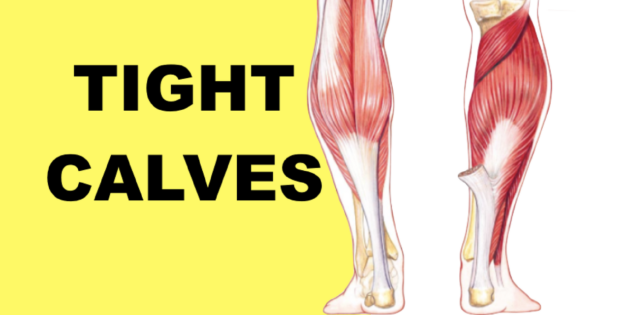When it comes to treating patellar tendonitis, it’s very important to look at the calves as a contributing factor so you have to understand the anatomy.
The calves cross the knee joint and as a result, affect your knees directly.
When you have tight calves, the opposing muscles (quads) and structures (patellar tendon) have to work harder to extend the legs.
The harder they work, the bigger the load on your patellar tendon which predisposes you to an increased risk of developing patellar tendinopathy.
Therefore, limitations in the flexibility of the calves can contribute to many issues in the kinetic chain.
Additionally, tight calves can limit ankle dorsiflexion which has been shown to increase the risk of developing patellar tendonitis.
The ankle is a key shocker absorber when it comes to landing a jump or running as seen in sports such as volleyball and basketball (which is why patellar tendonitis is referred to as jumper’s knee).
Limited dorsiflexion impairs your body’s ability to absorb forces so your body has to compensate and distribute that force to it’s nearest joint causing the patellar tendon to experience greater loads.
In this video I show you a calf stretch and a way to relieve muscle tension through a myofascial technique using a foam roller.
Along with soft tissue work you should also incorporate slanted board squats and hip abduction and external rotation exercises that work the whole kinetic chain of the lower extremities.
To treat patellar tendinitis correctly, you have to take into consideration contributing factors above and below the knee joint.
Below the knee joint, you have to look at the arches on your feet, the mobility in your ankles, the flexibility in the calves.
Above the knee joint, you have to look at the flexibility in the hamstrings, mobility in the hips, the tightness in the quads, and weaknesses in the gluteus muscles.
Even the best knee brace or patellar tendonitis strap will not fix your patellar tendonitis. If you need a brace or strap on a regular basis just to get by, you are better off getting to the underlying root of the problem.
This is why it’s important to incorporate a complete treatment plan that shows you the correct patellar tendonitis exercises and stretches if you want to heal your jumper’s knee and patellar tendon pain.








